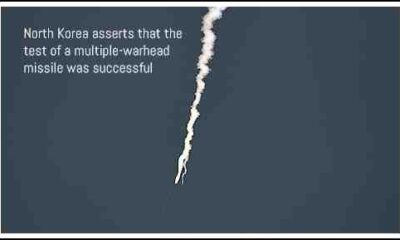BANK
The implications and remedies as China’s economy deflates
Published
11 months agoon

The second-largest economy in the world, China, is currently experiencing deflation, or a protracted drop in overall price levels. Both the producer and consumer price indices fell in July, indicating economic stress
The opposite of inflation, deflation is characterized by a sustained drop in the average price levels of goods and services within an economy. Deflation has recently occurred in China, the second-largest economy in the world, raising concerns about its economic prospects and the necessity of strong policy measures from Beijing.
Recognizing deflation
A concise definition of deflation is a persistent decline in average price levels across an economy. Inflation, on the other hand, results in an overall rise in price. Both the producer pricing index (PPI) and the consumer price index (CPI) in China showed reductions in July.
Consumer Price Index (CPI) Drop: In July, China’s CPI fell for the first time since February 2021, falling by 0.3 percent year-over-year.
Producer Price Index (PPI) Drop: The PPI dropped for the tenth consecutive month, dropping by 4.4 percent instead of the anticipated 4.1 percent.
These numbers highlight the growing economic difficulties China is currently facing.
Chinese deflation’s root causes
Reduced consumer demand, an abundance of commodities, technological advancements that lower production costs, or strict monetary policies by central banks are just a few causes of deflation. Decreased consumer demand and a slowing economy are the main causes of deflation in China.
Reduced Consumer Demand: When shoppers expect future price reductions, they frequently put off making purchases. As a result, there is less of a demand for goods and services.
Economic Stagnation: The slowdown in China’s economy has exacerbated deflationary pressures by lowering consumer expenditure.
Consequences of deflation
Although consumers may initially perceive a benefit from declining costs, deflation can have negative impacts on the economy, echoing China’s situation.
Deflation may start a harmful cycle known as the negative demand cycle. Consumers delay purchases in response to anticipated price drops, which reduces demand, lowers output, reduces corporate earnings, may result in job losses, and ultimately reduces consumer spending.
Read also:-Review of Made in Heaven 2: Drama, Humor, And Bold Performances
Economic Contraction: A downward cycle characterized by economic contraction, job losses, and financial instability can result from the cyclical decline in economic activity if it continues.
Real Burden of Debt: Deflation makes debt more burdensome in reality. The relative worth of debt either rises or stays constant as prices fall, making it difficult for people, companies, and governments to manage their debt obligations.
Countermeasures and Intervention by the Central Bank
Central banks often aim for a constant level of inflation in an effort to preserve economic stability. Growth, investment, and expenditure are all encouraged by moderate inflation. When deflationary forces start to build, central banks take action to combat their impacts.
Reduced Interest Rates: To encourage borrowing and spending and to counteract the drop in demand, central banks may reduce interest rates.
Increasing the money supply gives the economy a boost of liquidity, which encourages expenditure and averts a deflationary cycle.
Quantitative easing is one of the many monetary strategies that central banks use to encourage lending and economic activity.
You may like
-


North Korea asserts that the test of a multiple-warhead missile was successful
-


The Student Wing of Congress storms the Exam Body NTA office and locks it from within
-


“During President Murmu’s address to Parliament, PM Modi was shown 73 times, and LoP Rahul Gandhi was shown six times”: Congress
-


NASA contracts Elon Musk’s SpaceX to deorbit the International Space Station in 2023.
-


A Caution For The CBI In The Delhi Court’s Arvind Kejriwal Custody Order
-


Bar Council of India requests that bar associations abstain from demonstrating in opposition to new criminal laws
